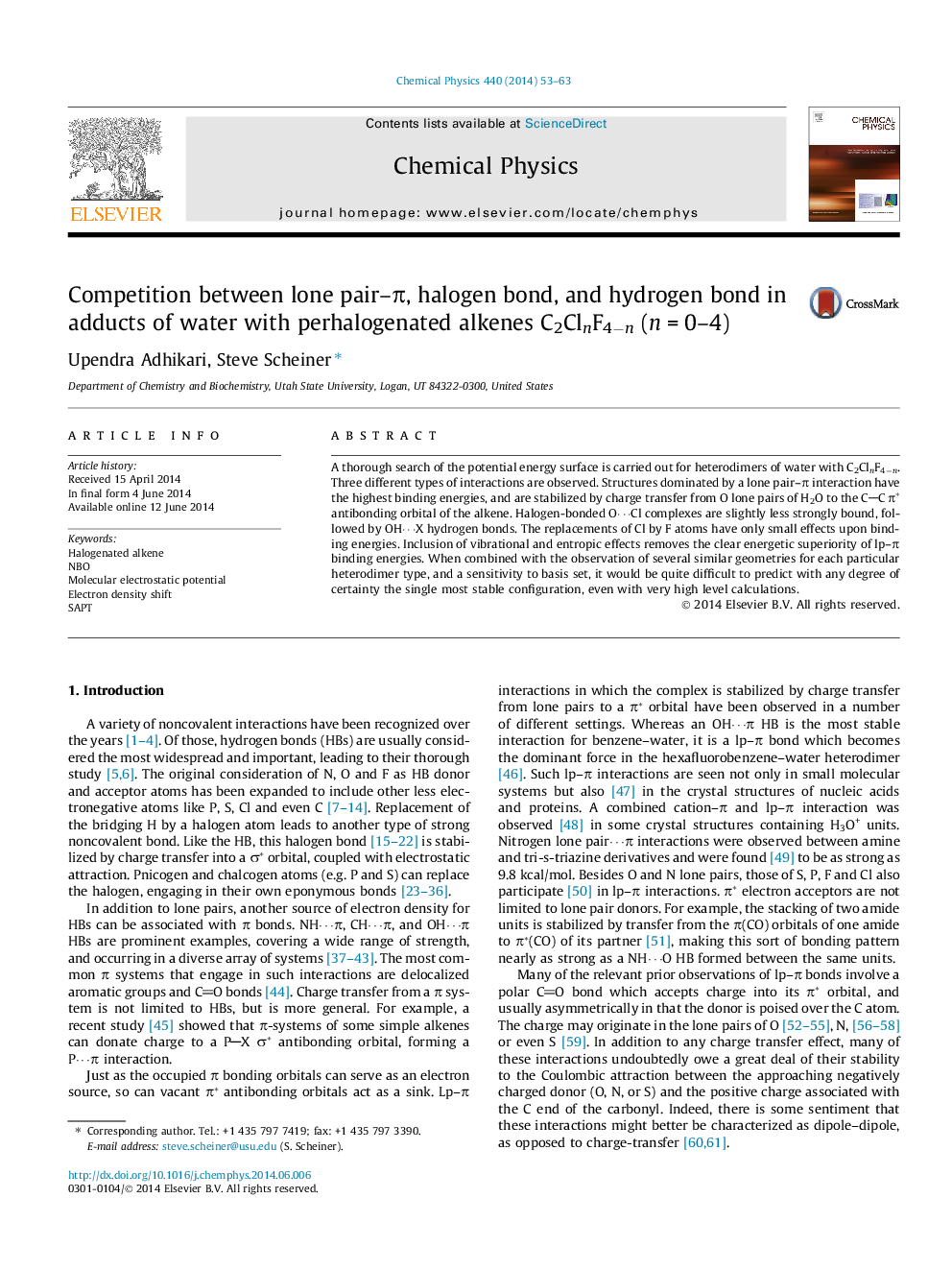| Article ID | Journal | Published Year | Pages | File Type |
|---|---|---|---|---|
| 5373418 | Chemical Physics | 2014 | 11 Pages |
â¢Charge transfer from O lone pair to alkene Ï* antibonding orbital.â¢lpâÏ is most strongly bound complex type between H2O and perhalogenated alkenes.â¢Binding energies larger than 2 kcal/mol, insensitive to identity of halogen atoms.â¢Halogen-bonded complexes are slightly less stable, followed by OHâ¯X H-bond.
A thorough search of the potential energy surface is carried out for heterodimers of water with C2ClnF4ân. Three different types of interactions are observed. Structures dominated by a lone pair-Ï interaction have the highest binding energies, and are stabilized by charge transfer from O lone pairs of H2O to the CC Ï* antibonding orbital of the alkene. Halogen-bonded Oâ¯Cl complexes are slightly less strongly bound, followed by OHâ¯X hydrogen bonds. The replacements of Cl by F atoms have only small effects upon binding energies. Inclusion of vibrational and entropic effects removes the clear energetic superiority of lp-Ï binding energies. When combined with the observation of several similar geometries for each particular heterodimer type, and a sensitivity to basis set, it would be quite difficult to predict with any degree of certainty the single most stable configuration, even with very high level calculations.
Graphical abstractDownload full-size image
